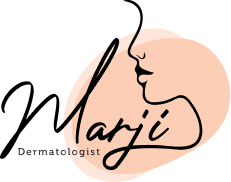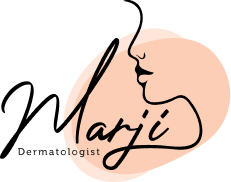You must have heard of Botox before; it is most famous for its cosmetic features. However, what is less known about Botox is that it is also used for medical treatment purposes. This article focuses on helping you understand what Botox is, its uses, indications, and contraindications, most commonly asked questions, and more.
Overview
Botox is originally a toxin; when used in small doses, it is most famous for its ability to reduce the appearance of facial skin wrinkles. Moreover, Botox has been approved by the Food and Drug Administration (FDA) to help treat some medical conditions such as neck spasms (cervical dystonia), excessive sweating (hyperhidrosis), overactive bladder, migraines, and lazy eye. It is a drug that weakens or paralyzes muscles if used in larger doses.
Botox is a protein made from Botulinum toxin, which the bacterium Clostridium botulinum produces. This is the same toxin that causes botulism. Botox injections use a toxin called onobotulinumtoxinA to stop a muscle from moving temporarily. This toxin is produced by the microbe that causes botulism, which is a type of food poisoning.
Botox was the first drug to use botulinum toxin. Other products now include abobotulinumtoxinA (Dysport), rimabotulinumtoxinB (Myobloc), and incobotulinumtoxinA (Xeomin). Each one of them is a little different from the other, particularly when it comes to dosage units, so they cannot be used interchangeably.
There are two types of botulinum toxin available for use in medical clinics in Jordan. Those include:
-
- OnabotulinumtoxinA (BOTOX)
- AbobotulinumtoxinA (Dysport)
Both botulinum toxins are used for multiple purposes; the doctor’s decision to choose one of the two is based on his or her expertise, procedure, and the patient’s condition.
Clinical Uses for Botox at Our Clinic
Botox injections are used to block specific chemical signals from nerves, mostly signals that cause muscles to contract. The most famous use of these injections is to temporarily relax the facial muscles that cause wrinkles in the forehead, around the mouth, and around the eyes. Botox injections are also used to treat medical conditions that affect how the body functions. Examples include:
- Hyperhidrosis (axillary, palms, and soles): Excessive sweating occurs even when the temperature isn’t hot, and you’re not exerting yourself. Botox can help treat this condition by using botulinum toxin to block the nerve signals responsible for sweating, therefore, stopping the sweat glands from producing too much sweat.
- Treating wrinkles in the forehead, glabella, and around the eye: Botox can reduce the appearance of facial skin wrinkles by blocking signals from the nerves to the muscles. The injected muscle can’t contract, which makes wrinkles relax and soften.
- Eyebrow lifting and fox eyes: Botox can help with eyebrow lifting by relaxing underlying muscles to smooth your skin on the outside and relaxing the muscles between the brows. As a direct result of those muscles being pulled up due to the injected Botox, the brows are lifted, and the eyes open up.
- Marionette lines: Botox helps to reduce marionette lines by relaxing the facial muscles underneath the injection site. In turn, your skin will become smoother with a reduced appearance of wrinkles.
- Smokers’ lines: Botox, Dysport, or Xeomin helps remove smokers’ lines by injecting botox and therefore preventing the muscle contractions that cause them in the injection site.
- Gummy smile: This is another cosmetic procedure that Botox can help with. Botox is injected in the area between the patient’s upper lip and nose to temporarily stop the muscles that contract or elevate when they smile, which allows them to smile without showing their gums.
- Masseter muscle to narrow the face and treat teeth grinding and clenching: Botox injections help relax the masseter muscle by limiting its movement. Once injected, the muscles stop working so hard and get to relax, which in turn controls the habitual teeth grinding.
- Treat migraines: Botox can help with migraines because it blocks chemicals called neurotransmitters that carry pain signals from your brain. This way, botox works like a roadblock that stops the nerves carrying pain signals before they reach your brain.
- Nefertiti lift for the neckbands: Botox helps relax the muscles in the neck, which results in an upward pull and, therefore, reduces saggy skin, making it tighter and tauter.
- To treat rosacea in mesobotox: Tiny doses of micro-Botox temporarily stop blood vessels from expanding, and therefore reduce the typical red and flushed skin. It could also block immune cells that are involved in the inflammatory response, which worsens rosacea.
- Treat facial asymmetry after surgeries, accidents, or facial nerve palsy: Botox can also improve facial symmetry by reducing the excessive muscle action on the non-paralyzed side of the face, which in turn improves facial symmetry.
Contraindications of Botox Treatments
Before deciding to proceed with Botox treatment for any purpose, whether it be cosmetic or therapeutic, you need to consult with a doctor or a medical specialist to make sure that you do not have one of the contraindications of botox, such as:
- Known allergy or sensitivity to constituents of the botulinum toxin product (e.g., cow’s milk protein allergy with abobotulinumtoxinA (Dysport)).
- Infection at the site of injection.
- Pregnancy or breastfeeding.
- Kids under 12 years old.
- Body dysmorphic disorder.
- A known disease of neuromuscular junction diseases.
- Dermatoses in the treatment area (e.g., psoriasis, atopic dermatitis, or eczema).
- Gross motor weakness in the treatment area (e.g., Bell palsy).
- Keloidal scarring.
- Immunocompromised.
- Neuromuscular disorder (e.g., amyotrophic lateral sclerosis, myasthenia gravis, Lambert-Eaton syndrome, myopathies).
Instructions After the Procedure
There are certain things that you can do to ensure getting the best results after the botox treatment. Here are some of the things that our doctor advises patients to do after the Botox treatment:
- Remain in a vertical position for at least 4 hours after the procedure; avoid leaning forward or sleeping.
- Avoid manipulation at the sites of injection.
- Do NOT massage the treated area.
- Avoid physical exercise or heat in the first 24 hours.
- Keep using the muscles injected in the first 4 hours after injection to promote selective uptake of toxin into the muscles.
- Avoid facials and saunas for at least 24 hours after the treatment.
- Avoid taking Advil, Vitamin E, Ginger, Ginko, Bilboa, Ginseng, and Garlic for 2 weeks after the treatment.
Side Effects of Botox
Botox injections are relatively safe when performed by an experienced doctor. Possible side effects and complications could include:
- Bruises, pain, or swelling at the site of injection.
- Droopy or crooked eyebrows.
- Droopy eyelids.
- Crooked smile or drooling.
- Eye dryness or excessive tearing after the treatment.
- Asymmetry.
- Headache or flu-like symptoms.
How Botox Procedure for Reducing Wrinkles Is Done
Here is what you should expect when you go for a Botox appointment to reduce face wrinkles:
- This procedure should be done by the doctor only.
- First, the doctor will clean the area of treatment very well.
- After that, the doctor will start examining the patient: By doing facial expressions like frowning, raising eyebrows, and smiling.
- The doctor will then mark the areas of injection with a marker.
- The procedure following includes reconstitution of the Botox and preparing the needles.
- The doctor will then inject each site slowly and then apply compression to maintain hemostasis.
- The whole procedure could take around 10-20 minutes.
Results You Should Expect from Botox Treatment
Here is what you should expect of the treatment following your sessions:
- Botox results start appearing after 1 to 2 days following the session.
- Final results begin showing after 2 weeks.
- You need to go for a touch-up session in 2 weeks.
- The results last for about 3-6 months.
- You need to repeat the sessions every 6 months or as needed.
Frequently Asked Questions (FAQs) about Botox
Here are some of the most commonly asked questions regarding the Botox treatment:
What is Botox?
Botox is originally a toxin; when used in small doses, it is most famous for its ability to reduce the appearance of facial skin wrinkles. Botox is intended to soften facial wrinkles and lines and treat certain medical conditions. Small amounts of the product are injected into the skin to relax targeted facial muscles. As the muscle relaxes, the overlying line or wrinkle becomes less noticeable.
What are the possible side effects of Botox?
Some patients report having some bruising or redness after the session; however, it subsides after a few hours. Other more serious complications are rare to happen.
Does Botox treatment hurt?
No, not at all. The Botox procedure is not painful. Some customers compare it to a light pinch.
Can men have Botox?
Yes, in fact, men make up 10% of patients who use Botox as a treatment.
How many treatments will I need?
You will see improvements after a single treatment. However, you need to discuss your condition with your doctor as they will be able to better determine how many sessions you might need. As the effects of the injectable wear off, your skin will return to its pre-treatment appearance. Usually, many patients who return every three to six months to repeat the Botox treatment maintain the effects of their previous session.
How long do the results last?
The time frame varies from person to person, but most patients see improvements lasting for three to six months, to say the least.
When can I see the results of my Botox session?
Results usually become visible within 24 to 48 hours of treatment.
What is the recovery after Botox like?
Downtime is very minimal—almost nonexistent. Most patients resume work and the rest of their regular activities almost immediately after treatment.



